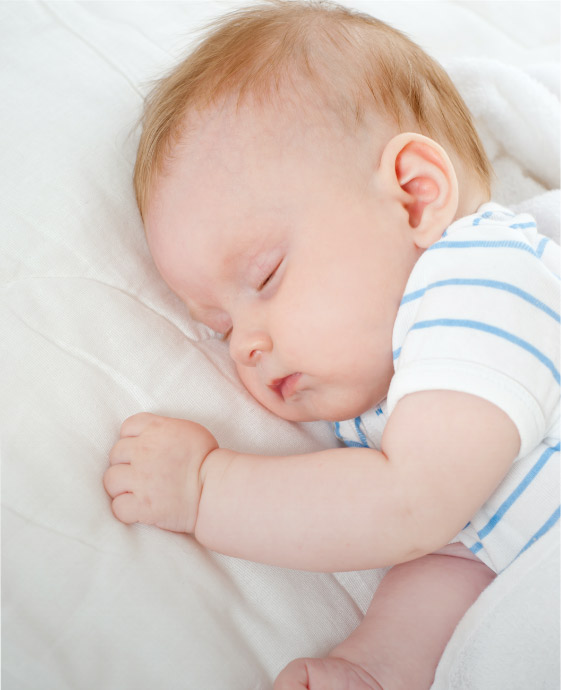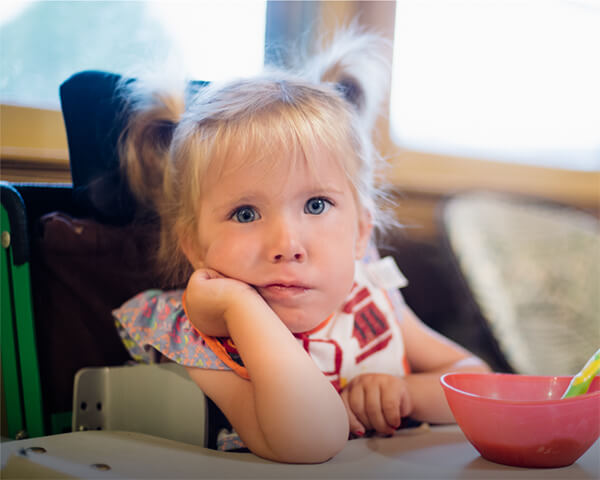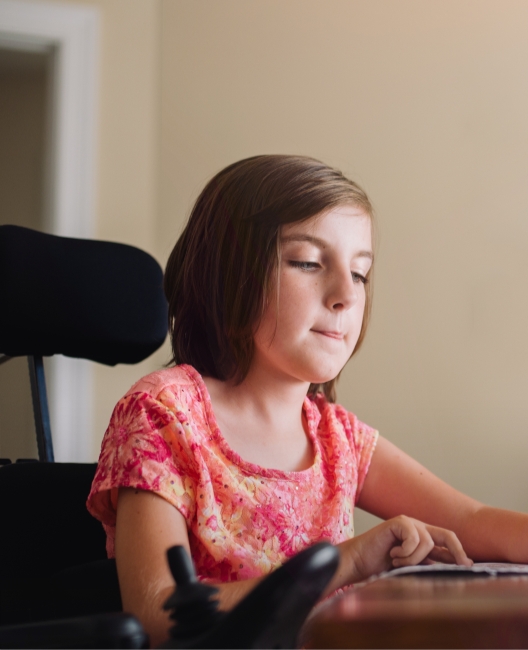The characters shown are real patients and the required consent to use their stories has been obtained from the patients and families. Photographs are for illustrative purposes only.
CHARACTERISTICS OF SPINAL MUSCULAR
ATROPHY
Presymptomatic SMA:
A newborn screening program uses a blood test to identify SMA in babies before any symptoms appear.2 Early detection and treatment of SMA during this presymptomatic time are essential. Starting a baby on disease-modifying treatments immediately after diagnosis enables them to reach major milestones of normal, healthy development.3
Click through the tabs to see additional details about each type.
SPINAL MUSCULAR ATROPHY: A NEW CLASSIFICATION
People diagnosed with SMA were traditionally classified into 1 of the 4 types above, depending on when they started showing SMA symptoms as well as their level of muscle weakness.
This classification was based on how the disease was expected to progress in that person.7,8
With the development of new and effective SMA treatments, and depending on when treatment was started, the disease does not always progress according to the definitions of SMA types 1 to 4.7
For this reason, people living with SMA are now also being classified according to their functional abilities at the time of their diagnosis, namely non-sitter, sitter, or walker.7
SIGNS AND SYMPTOMS OF SMA
Each person living with SMA experiences symptoms differently. Symptoms may include gradual muscle weakness, floppiness, and muscle wasting (atrophy). Muscle weakness is usually the same on both sides of the body.1,9
Learn more about signs and symptoms of SMA in different age groups
LISTEN TO MORGAN’S PARENTS PERSPECTIVE
“No one knew to think about these [signs] as being red flags.”
– Morgan’s mum
Watch video nowvideoWrapper1
CONNECT
to learn more about how to be part of the SMA community
The characters shown are real patients and the required consent to use their stories has been obtained from the patients and families. Photographs are for illustrative purposes only.
References
1. Kolb SJ, Kissel JT. Spinal muscular atrophy: a timely review. Arch Neurol 2011;68(8):979-984.
2. Loeber JG, Platis D, Zetterström RH, et al. Neonatal screening in Europe revisited: An ISNS perspective on the current state and developments since 2010. Int J Neonatal Screen. 2021;7(1).
3. Jędrzejowska M. Advances in Newborn Screening and presymptomatic diagnosis of spinal muscular atrophy. Degener Neurol Neuromuscul Dis. 2020;10:39-47.
4. Prior TW, Leach ME, Finanger E. Spinal muscular atrophy Seattle (WA): University of Washington, Seattle; 2020 [Accessed 5 October 2022]. Available from: https://www.ncbi.nlm.nih.gov/books/NBK1352/.
5. Cure SMA. Types of SMA [Accessed 5 October 2022]. Available from: https://www.curesma.org/types-of-sma/.
6. Markowitz JA, Singh P, Darras BT. Spinal muscular atrophy: A clinical and research update. Pediatr Neurol. 2012;46(1):1-12.
7. Castellano IP, Cabrera-Serrano M, Medina RC, et al. Delphi consensus on recommendations for the treatment of spinal muscular atrophy in Spain (ret-ame consensus). Neurología. 2022;37(3):216-228.
8. Kölbel H, Müller-Felber W. Spinale muskelatrophie (SMA), diagnostik und therapie AWMF online2020 [Accessed 6 October 2022]. Available from:
https://www.awmf.org/uploads/tx_szleitlinien/022-030l_S1_Spinale-Muskelatropie-SMA-Diagnostik-Therapie_2021-07_1.pdf.
9. Mercuri E, Finkel RS, Muntoni F, et al. Diagnosis and management of spinal muscular atrophy: Part 1: Recommendations for diagnosis, rehabilitation, orthopedic and nutritional care. Neuromuscular Disord. 2018;28(2):103-115.






















































